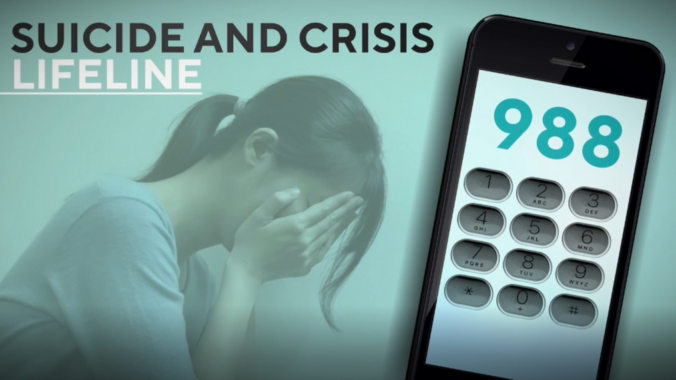States rolled out 988 as the new National Suicide Prevention Lifeline number, similar to how people can call 911 for emergencies.
All phone service providers will be required to connect callers who dial 988 to the lifeline starting July 16. The existing lifeline uses a 10-digit number, 1-800-273-8255.
The rollout has been in the works for years, and many mental health professionals say it will help expand much-needed services and make them more accessible to people seeking help. But some experts have said their states aren’t ready for the launch.
Here’s what you need to know:
How does 988 work?
What to know: After dialing or texting 988, you’ll be connected with a trained mental health professional at a local or regional crisis center. If your local center cannot connect you to a counselor, national backup centers can pick up the call. The lifeline is administered by the nonprofit Vibrant Emotional Health.
That’s how it has worked for the National Suicide Prevention Lifeline number, and the setup will continue after 988 is launched.
What experts say: The shortened, more accessible lifeline marks “a transformative moment in terms of thinking about approaching crisis care,” said Miriam Delphin-Rittmon, an assistant secretary at the Substance Abuse and Mental Health Services Administration, on Thursday.
The launch also comes amid what experts have called a mental health crisis in the U.S. amid the COVID-19 pandemic.
SUICIDE PREVENTION LIFELINE SHIFTS TO 988: LGBTQ advocates hope for ‘culturally competent’ training
Are states prepared?
What to know: For many advocates, 988 represents an opportunity to expand services but also a challenge because of possible added pressure on already strained mental health crisis response systems. Some advocates have questioned whether states will be ready for the increased call volume projected after the switch to the 988 model.
In the first year of 988’s implementation, the number of contacts for the lifeline is expected to increase to 7.6 million – a twofold increase compared with the 3.3 million calls, texts or chats in 2020, according to a report in December 2021 from SAHMSA.
What experts say: Delphin-Rittmon acknowledged that some crisis response centers are worried about the size of workforces in their states and about resources for this launch. She said she has been working with state representatives on funding and to “assess their overall readiness.” .
The launch of 988 provides “an opportunity to expose gaps and weaknesses in our system,” which would allow centers to see where additional investments may be needed, said Angela Kimball, national director of advocacy and public policy at the National Alliance on Mental Illness.
“Will it work perfectly?” she said. “No. Because changing crisis response won’t happen overnight.”
